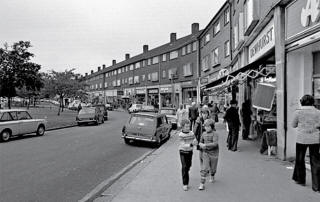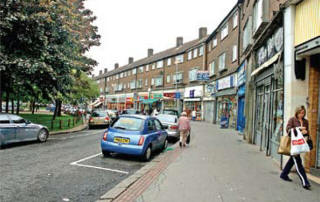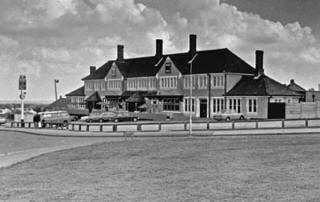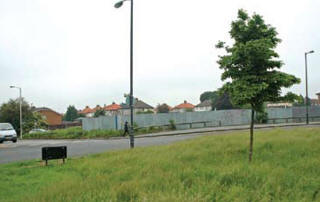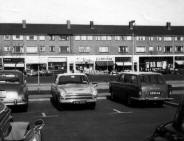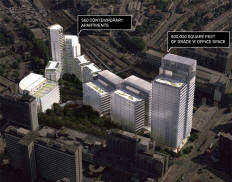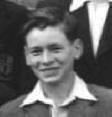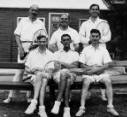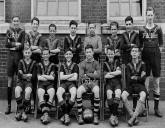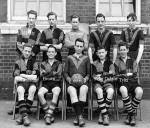|
Tony Almond (John Newnham 1957-61) adds more information about Mr. Myers... |
|
Tony Almond, Staines, Surrey (formerly, of course, in Middlesex) October 2008 Email. |
|
Mel Lambert (JRGS 1959-65) reviews the Aug and Sep issues of Your Croydon... |
||||
|
Once
again, the August and September 2008 editions of Croydon Council's
Your Croydon magazine include photo essays from
Frazer Ashford (JRGS 1962-69) as part of his continuing series
entitled From Here to Modernity, which charts Croydon
during the past 25 years.
Specifically, in his August 2008 feature
Frazer remembers his childhood in New Addington.
Click on each thumbnail below to view a larger version
of Frazer's From Here to Modernity images, or
here to view the
24-page magazine in PDF format.
For his September 2008 feature,
Frazer raises a glass to a much-missed New Addington landmark.
Click on each thumbnail below to view a larger version
of Frazer's From Here to Modernity images, or
here to view the
24-page magazine in PDF format. For more examples of Frazer’s work, visit his website. Other editions of From Here to Modernity can be hound here. Your Croydon ©2026 Croydon Council. |
||||
|
John Byford (JRGS 1959-68) adds: Fascinating to read
Frazer's piece on New Addington and see his photos. (In one you
can almost see the baker's shop where the large mirror enabled us to
do Harry Worth impersonations.)
Cliff Preddy (JRGS 1963-65) adds: We lived at three
different council houses in New Addington during my childhood.
The first (1952 to 1958) was at the far southern end of the
estate, just before the country lanes disappeared into what soon
became rural Kent. The second (1961 to 1963) was at the Lodge
Lane northern end, and finally (1963 to 1966) we moved fairly
close to the factory estate on the eastern edge. Mr. Lowe,
the headmaster at JRGS at the time, wrote to Croydon Council to
help us secure the last house, which had an extra bedroom so
that it would be easier for me to work on lots of maths
“examples” whilst doing A-Levels with Messrs Pearce, Chaundy
and Cripps.
ML rejoins: While trading
emails with John Byford and Cliff Preddy - plus other Alumni -
memories have come flooding back of my childhood on the New
Addington Estate, when my parents lived from 1951 until the
death of my father in 1975. I
also recall the Central Parade before it was completed, the fish shops and chemist at the northwestern end, closest to
the library, and the Martin's newsagent and Woolworths at the
other - close to where John used to live. I remember the opening
of a new supermarket that was built at the "join," called - I
recall - Coopers and, subsequently, Fine Fare. |
|
Mel Lambert (JRGS 1959-65) uncovers Ruskin Square development for Croydon ... |
|
It is encouraging that our school's name
now lives on in a different guise. A large area to the south-west of
East Croydon railway station, which soon will house retail stores and
mixed houses, has been renamed Ruskin Square by its developers, Schroders
and Stanhope. Currently being designed by Foster + Partners with
FaulknerBrowns, Ruskin Square is described as bearing "all the hallmarks
of 21st Century style and technology." But the ideas behind the new
development are said to have been strongly influenced by John Ruskin,
who "believed architecture and well-designed space is critical to the
quality of our lives; that it 'proposes an effect on the human mind, not
merely a service to the human frame'.” Click on the thumbnail below to
view a larger plan view. Mel Lambert, Burbank, CA, USA. September 2008 Email
Geoff Lavender (JRGS 1962-69) adds: I happened to be in Croydon
briefly a couple of weeks ago visiting my mother, who was then in Mayday
Hospital. I took the bus each day between Shirley and the hospital, and
was able to look down from the upper deck into and across this area. |
|
Dan Lambert (JRGS 1947-51) recalls post-war school teachers and The Windmill... |
|
I have just stumbled upon The Mill
website through FriendsUnited.com. I attended JRGS from 1947 to 1951,
and was unaware of any other pupils named Lambert. In browsing the site
it was interesting to peruse the list of past teachers. However, maybe
my memory is slipping with the passing years, but I was sure during my
time at JRGS there was a maths/science master by the name of Mr.
Evans. He had ginger hair and moustache, and was a great teacher
with a rather cynical sense of humour.
The world after John Ruskin Grammar
School Dan Lambert, Westmeadows, Victoria, Australia, September 2008 Email Tony Childs (JRGS 1947-53) adds: I was in the parallel form to Dan - 4S and 5S - and there was indeed a Mr. Evans. He had ginger hair and sometimes a moustache. There is a photograph of him in the staff tennis team in the piece about Charles (C. E.) Smith, shown right; click on the thumbnail to view a larger version.
Mel Lambert (JRGS 1959-65) adds:
Sharing, as we do, a common surname, I have been comparing ancestries
with Dan Lambert. My father's parents, James and Lydia Lambert, lived in
Dennett Road in Broad Green, West Croydon; my Dad attended the nearby
Elmwood School. |
|
Geoff van Beek/Downer (JRCS 1962-69) meets a fellow Ruskin Alumnus... |
|||||
|
The standard quip is: “Nostalgia is okay, I
suppose, but it ain’t what it used to be”. There are times though when
it is even better!
Geoffrey C. van Beek, Rotterdam, Holland, August 2008 Email. |
|
Bryan Burchett (JRCS 1941-46) recalls war-time teachers and contemporaries... |
|
In a fit of nostalgia I thought I would
seek any information circulating in connection with school life in
Tamworth Road and was directed to The Mill - covering the
activities of the Alumni of JRGS. At first I thought the name of the
publication was chosen as an indication of the form of education endured
by some at the central Croydon building; that would have been unjust.
Seeing it linked to the title and word alumni caused me to think the Old
Boys Association had moved into a rather "posey" sphere, and recalled
the music of a Harvard mathematics graduate and prolific song-smith, Tom
Lehrer, who dipped into soggy nostalgia to write hilarious musical items; one recalling "ivy-covered professors in ivy-covered walls". I am
quite certain the classes of 1940-50 did not see themselves as potential
Society members or "Alumni", but we are forced to accept that attitudes
do change!
Arthur William MacLeod - second
headmaster|1934-46
Other memorable JR teachers
Contemporaries - In touch or seen in recent past Bryan Burchett, Beckenham, Kent. August 2008 Email |
|
Archived News/Events Pages have been moved here. |
|
The content of this web site is provided for educational purposes only, and is subject to change without notice. The JRGS Alumni Society makes no representation about the accuracy, reliability, completeness or timeliness of the content of this web site, nor the results to be obtained from using any part of such content. |
Please send any messages and memorabilia to
webmaster
©2026 JRGS Alumni Society. All
Rights Reserved. Last revised:
07.12.25

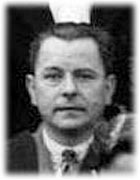 Earlier
in the year The Mill very kindly posted some information I
supplied about Charles Myers, pictured left, who had been
deputy headmaster and senior French master at John Ruskin school, and
subsequently headmaster at John Newnham during my era. As a result of
that mention I was contacted quite unexpectedly by his granddaughter,
who gave me the following additional information, which may be of
interest to alumni from his era.
Earlier
in the year The Mill very kindly posted some information I
supplied about Charles Myers, pictured left, who had been
deputy headmaster and senior French master at John Ruskin school, and
subsequently headmaster at John Newnham during my era. As a result of
that mention I was contacted quite unexpectedly by his granddaughter,
who gave me the following additional information, which may be of
interest to alumni from his era.



